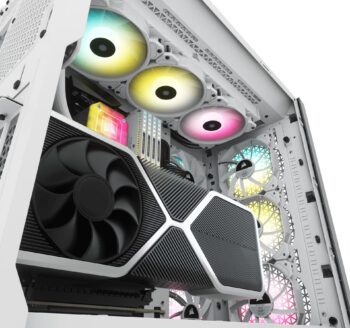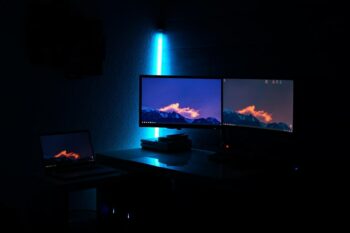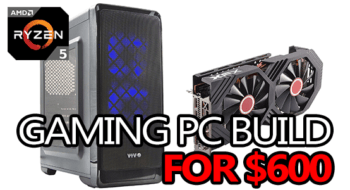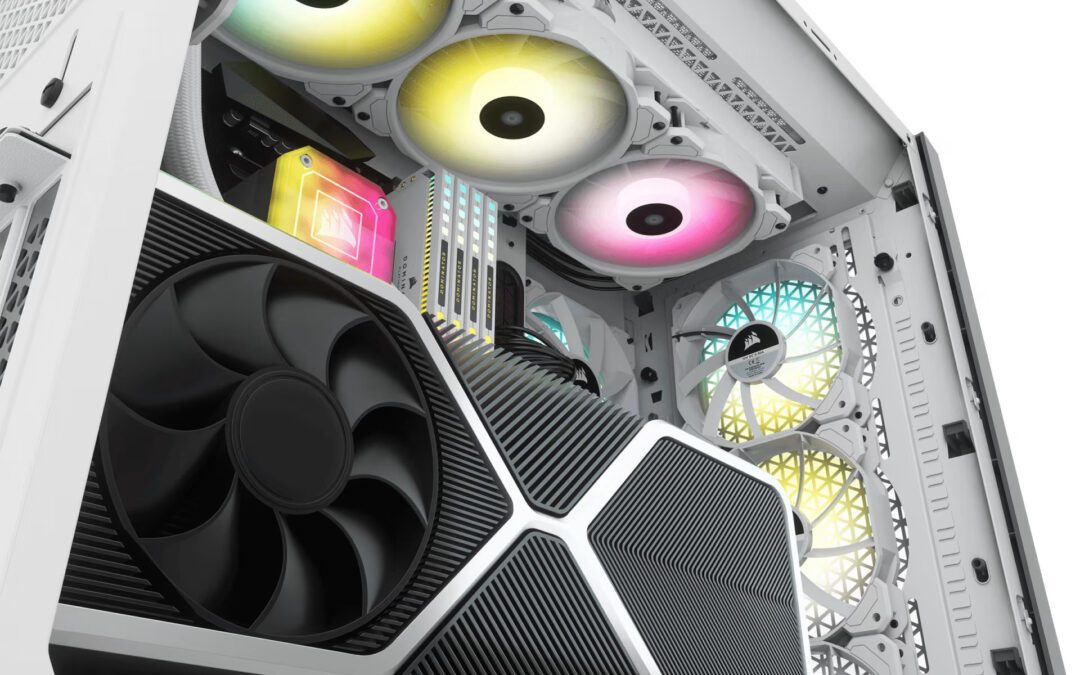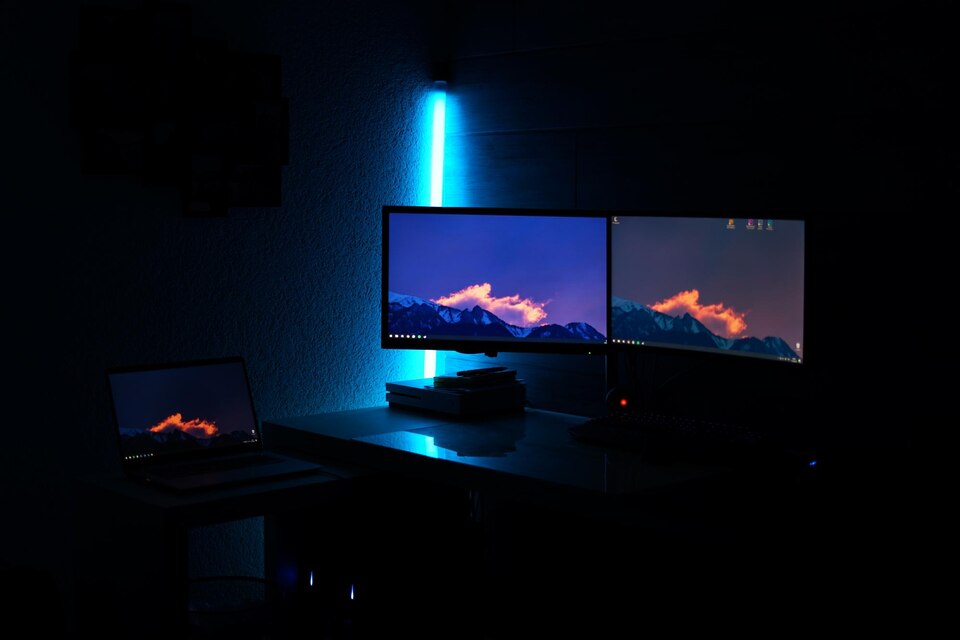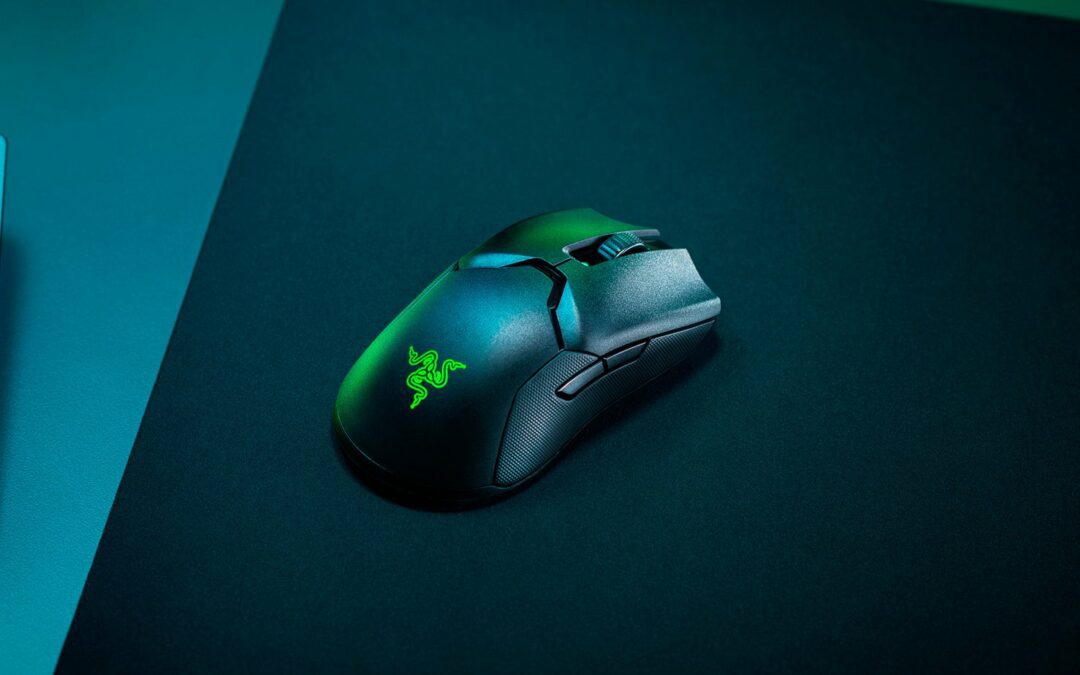“Vertical Sync” or “VSync” is an often misunderstood option found within the display settings of pretty much any game you’re going to play – as long as it’s not 2 decades old. But, what is VSync? Is it worth using, or should you simply turn it off and forget about it?
Lucky for you, that’s exactly what we’re going to cover in this quick guide! Not only are we going to discuss what VSync is and what it does, but we’ll also go over how to turn it off and on, as well as dig into some alternatives and variants.
What is VSync?
To really understand what VSync does, you first have to learn some of the basics about how things actually get on your screen… And a little bit about the screens themselves. Thankfully we don’t have to get very technical and this can all be explained relatively fast in a very non-technical manner.
Imagine an old-time movie reel; practically anything with a screen works in a similar way. The one major difference is, instead of a bulky reel of images, now we have digitalized data. The images on your monitor are a product of that data being processed and turned into still images (or frames) which are then rendered in rapid succession on a frame-by-frame basis – hence the term “FPS” or “Frames Per Second”. FPS has a direct relation to how smooth a movie or game will look, but all screens have a maximum amount of frames they can effectively display. How many frames a screen can display is indicated by their refresh rate in a 1:1 ratio, this is almost always displayed in a measurement of Hz, like “60Hz”.
Basically, a monitor with a refresh rate of 60Hz can effectively display 60FPS, a monitor with a 120Hz refresh rate can display 120FPS, and so on.
I can hear you saying “but what does this mean!!” so don’t worry we’re getting to the point!
Say you have a system capable of rendering a game at 150FPS but you have a 60Hz monitor. While playing that game you might experience something known as “screen tearing”. An excessive amount of FPS can also cause a game to feel jittery or jerky in a similar way to having too few FPS. Problems like these can be a really annoying depending on how bad they are. VSync eliminates issues like screen tearing and jittering by limiting the FPS your system can produce to match the refresh rate of your monitor.

A crude example of screen tearing
When VSync is Good
VSync can be really helpful when your PC is capable of rendering way more FPS than your monitor is capable of displaying. The graphical artifacts caused by an excessive amount of frames per second can often be just as bad as having too few. However, this almost always boils down to personal preference and some people swear by VSync and others can’t stand to use it.
The Disadvantages of VSync
Now that you know what VSync does and how it can help, it’s time to let you know that it’s not all good. Nothing is perfect, and neither is VSync.
Because VSync is basically making frames wait before they’re rendered, it has a tendency to add a bit of input lag. Meaning, you’ll press a button but the reaction won’t be instant on your screen, it’ll be delayed by a few ms. It doesn’t sound like it would be very noticeable, and in some games it’s really not; but in fast-paced games like first-person shooters, the added latency can really ruin your day.
Even worse, if your system isn’t quite capable of consistently maintaining over 60FPS (or whatever your monitor’s refresh rate is) in a game, whenever it dips below 60FPS the hit to performance will be even bigger than it would be with VSync turned off.
So Many Syncs!
VSync is a direct reference to just the most basic synchronization tech that’s been around for quite some time. However, beyond that, both AMD and Nvidia have their own proprietary sync techs that work similarly to VSync – usually better. Some are even built-in at the hardware level and will require you to purchase a special monitor; but we’ll talk about that in a second.
Nvidia Adaptive Sync
Nvidia’s Adaptive Sync is an awesome alternative to VSync if you’re running a GT 600-series Nvidia graphics card or newer. It works in very much the same way that basic VSync does by limiting your FPS output to match your monitor refresh rate, but whenever you dip below that level it’ll temporarily shut off until your FPS would otherwise spike above your refresh rate. This helps to eliminate the large performance hit caused by VSync.
Adaptive Sync really comes in handy in games where your FPS jumps around a lot.
Nvidia Fast Sync
Fast Sync is another Nvidia-only tech that you have to have a GTX 900 or 10-series GPU or better to take advantage of. It’s most useful when your system is capable of rendering frames way above (3x or more) the refresh rate of your monitor. It works to effectively eliminate all tearing issues while only adding a minimal amount of input lag when compared to other sync techs.
Nvidia Smooth Sync
Smooth Sync is another tech proprietary to Nvidia hardware. It’s been out for a while and is only used in SLI setups where you have 2 or more graphics cards operating together. It works to help remove a lot of the stuttering that SLI setups are known to produce by capping your FPS at an “ideal” level until your system can consistently produce more FPS.
Nvidia G-Sync
Nvidia’s G-Sync is one of those techs I mentioned earlier where you’ll have to buy a specialized (and usually expensive) monitor to take advantage of. On top of that, you’ll also need a GTX 600-series or newer Nvidia GPU.
Unlike the other types of synchronization techs we’ve talked about, G-Sync functions at the hardware level and does not limit your frames per second. Instead, it adjusts your monitor’s refresh rate according to your current in-game FPS. This allows for a much smoother gaming experience than software-level sync techs like VSync and Adaptive Sync can offer. It’s especially useful on high refresh rate monitors when your system can’t quite push enough FPS.
AMD Enhanced Sync
AMD’s Enhanced Sync is a pretty new tech from AMD that works to effectively reduce screen tearing like VSync does, but also works to reduce the problems that VSync adds like increased latency and stuttering when dipping below your monitor’s refresh rate. Like Nvidia’s proprietary sync techs, to take advantage of AMD’s Enhanced Sync you’re going to need a compatible graphics card from the RX 400-series or newer.
AMD FreeSync
AMD’s FreeSync is the other tech you’ll have to buy a specialized (usually cheaper than G-Sync) monitor for. You’re also going to need an R7/R9 200-series AMD graphics card or newer. It’s worth noting that the R9 270/X , R9 280/X, and R9 370/X do NOT support FreeSync. Certain AMD APUs (a CPU with built-in graphics) will also support FreeSync – most anything from the A6 7000-series and newer.
FreeSync functions very similarly to G-Sync and works to enhance your gaming experience by reducing tearing and stuttering during gameplay. Like G-Sync, it allows your monitor to refresh outside of the period when more basic monitors would which in turn allows for smoother image output.
Should You Use VSync?
After everything we’ve learned up to this point, I’m sure you have a good idea if a VSync should be used by you. Beyond that, whether or not you want to use a sync tech is entirely your call! I would definitely recommend it if your system is capable of outperforming your monitor by a large margin. In some games, disabling VSync and enabling either Adaptive Sync or Enhanced Sync can be a fix to poor performance, like in Fallout 4.
If you’re able to use either Nvidia’s Adaptive Sync or AMD’s Enhanced Sync, those should definitely be used BEFORE you use the basic VSync as they’ll both deliver better results in most cases.
IF your system is not capable of rendering frames above your monitors refresh rate, there’s really no reason to use VSync or any of the alternatives outside of G-Sync and FreeSync (both are helpful in those cases). In fact, using VSync when your system isn’t powerful enough to render a high enough frame rate to match your monitor’s refresh rate is more than likely going to result in overall bad performance.
Conclusion
I hope this article was able to help you understand what VSync is, what it does, and whether or not you should use it.
When used properly, VSync can really help to reduce screen tearing and jittering from too many FPS. But, using it when you shouldn’t could end up harming your performance more than anything. It all comes down to learning about the tools at your disposal and when best to apply them!
